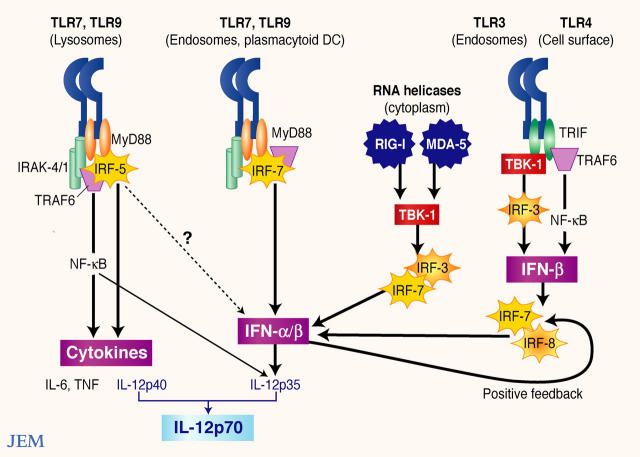Figure 2.
Major signaling pathways for type I IFN gene transcription. TLR7 and TLR9 are highly expressed on pDCs and, depending on the chemical properties and formulation of the ligands used and on the cell type, activate signaling pathways involving either IRF-7 or IRF-5 and NF-κB. The IRF-7 pathway preferentially induces transcription of the type I IFN gene family and it is activated when the TLR–MyD88–IRAK–IRF-7 complex is retained in the endosomal compartment, as observed in pDCs treated with type A CpG ODNs. Other receptors able to induce production of type I IFN are TLR3 and TLR4 signaling through the adaptor molecule TRIF and the kinase TBK-1. TLR4, in addition to TRIF, also utilizes the adaptors TRAM, MyD88, and TIRAP (not shown in the figure). The cytoplasmic dsRNA receptor RIG-I also utilizes TBK-1. IRF-7 is required for optimal production of type I IFN induced by all these receptors, whereas IRF-3 is essential only for the response to TLR3 or TLR4. A positive feedback mechanism for IFN production involves the de novo synthesis of IRF-7 and IRF-8 in response to type I IFNs that amplify the transcription of all the genes of the type I IFN family.

